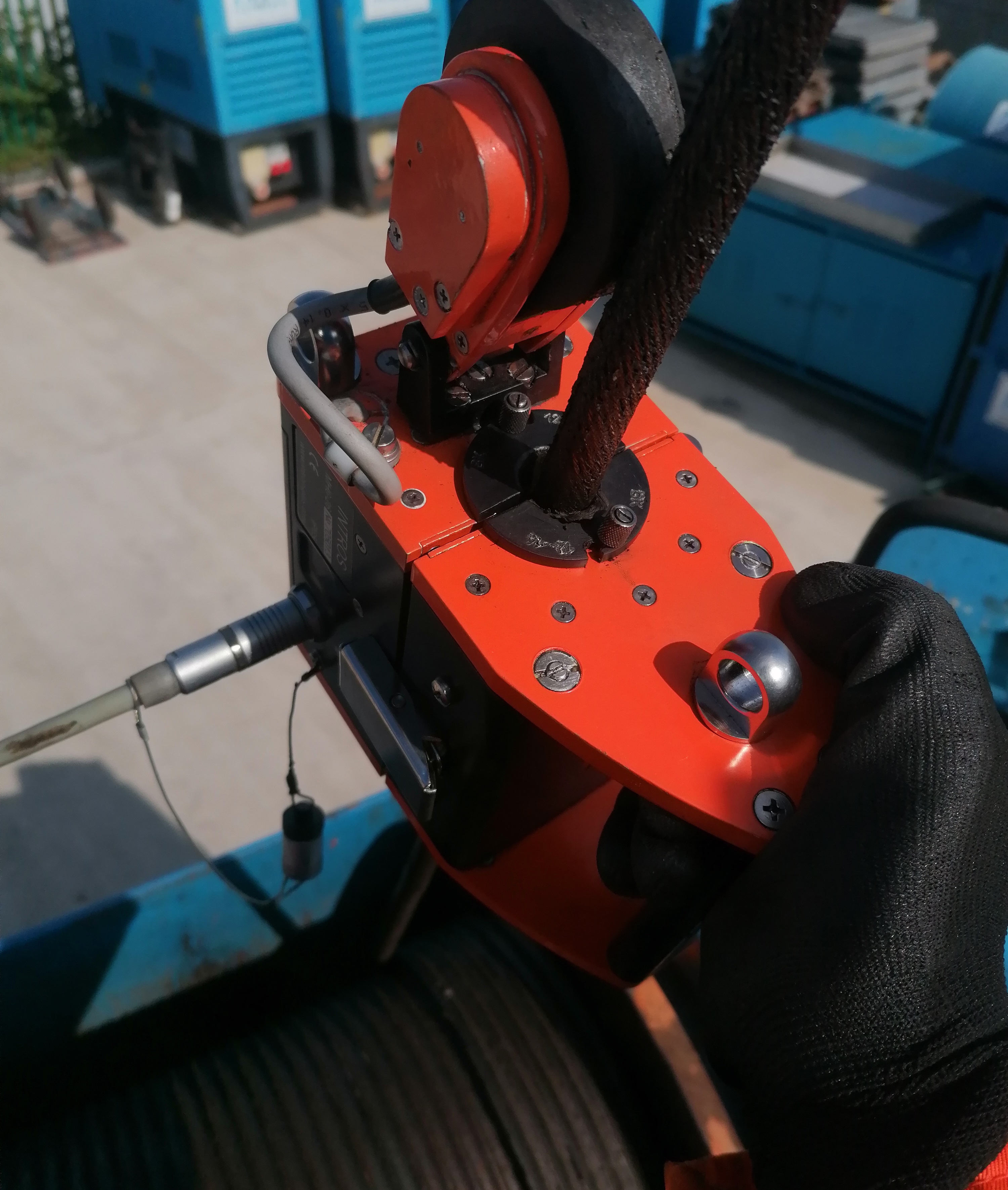

Most modern mobile and tower cranes use plastic sheaves to save weight and increase load capacity. Whilst plastic sheaves may appear to be kind to the rope, they actually cause an unexpected safety issue for multi-strand rotation resistant ropes.
The vast majority of crane rope thorough examinations are carried out with the inspector visually inspecting the outer surface of the rope and/or by letting the rope pass through a gloved hand or rag to snag any broken wires protruding from the rope (not recommended). Whilst this may pick up some of the broken wires, it does not allow for any assessment of the internal condition of the rope. It is widely known that rotation-resistant, multi-strand ropes suffer from internal degradation caused by the high inter-wire contact pressure between adjacent layers and this internal degradation will eventually cause catastrophic failure of the rope if not identified.
Historically, cranes were fitted with steel sheaves and repeated contact between the rope and sheave would eventually lead to external wear, loss of section and broken external wires. These broken wires are visible and can be counted and assessed using Table 4 from ISO4309 to allow the rope examiner to decide upon the their contribution towards rope discard. Although not visible, the internal wires are also breaking due to high contact pressure between adjacent layers of strands as the rope bends over the sheaves under load. It was assumed that the outer wires and inner wires break at a similar rate when using steel sheaves, so although the rope examiner cannot see the condition of the inner layers of the rope, the rope is discarded prior to failure based upon the external condition only.
Plastic sheaves significantly reduce wear on the outside of the rope so there is not the same level of external deterioration when compared with steel sheaves. With less external deterioration but the same level of internal deterioration, reliance upon an external inspection leads to an increased safety risk. For this reason, Table 4 from ISO 4309 should NOT be used to assess the impact of randomly distributed wire breaks on sections of rope running exclusively through plastic sheaves.
The latest revision of the International Standard covering crane rope inspection and discard, ISO 4309:2017, states in section 5.6 “An MRT should be used where defects exist which might not be identified by visual inspection alone and shall be performed together with a visual inspection”. As it is known that rotation resistant, multi-strand ropes deteriorate internally and as plastic sheaves slow down the rate of external deterioration, MRT is now used during the thorough examination of hoist ropes on modern mobile and tower cranes to minimise the possibility of sudden, unexpected failure.